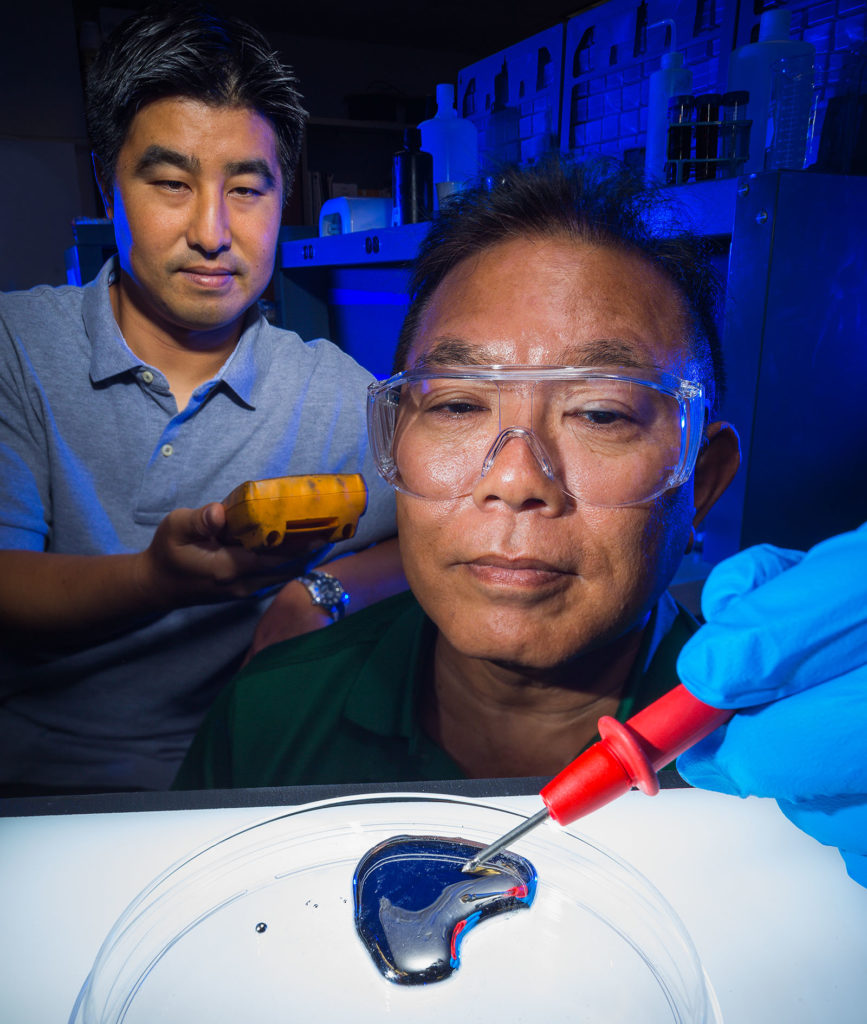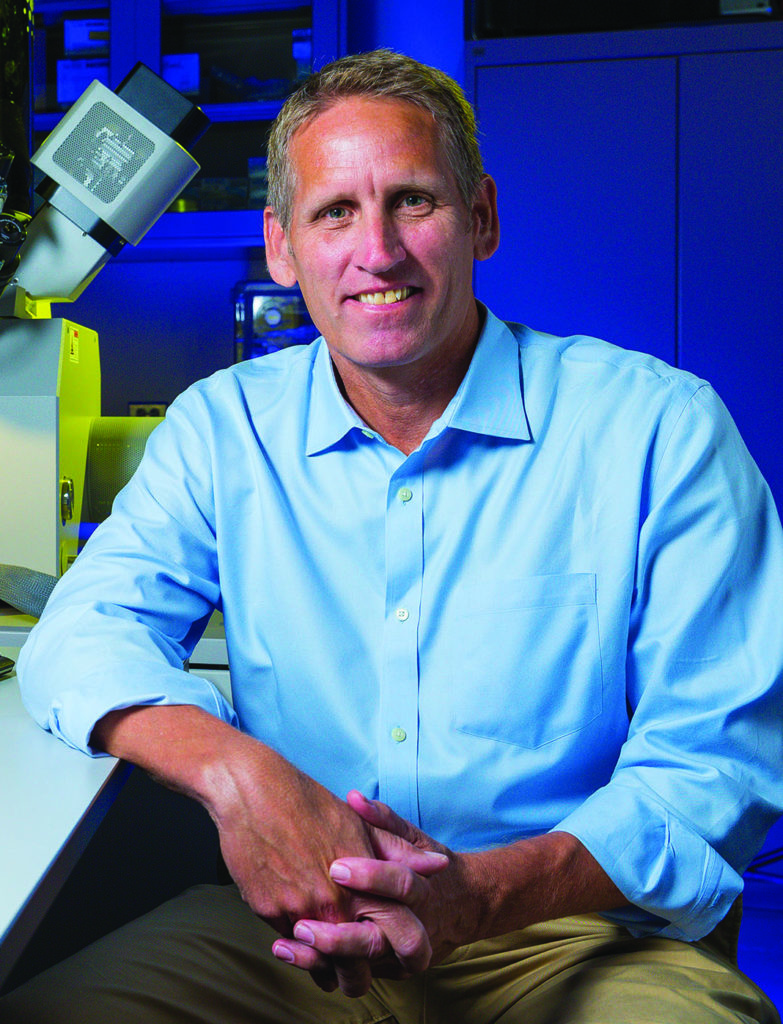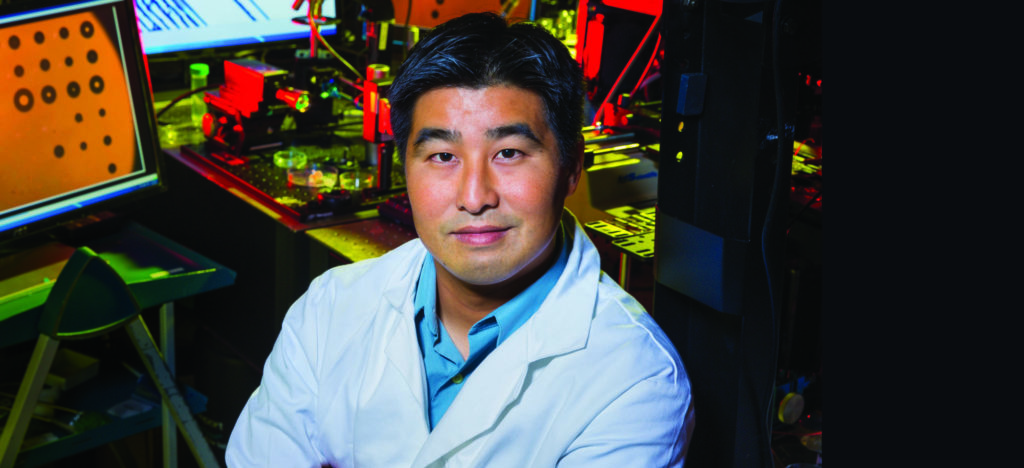Nanotechnology Research in Electrical Engineering
For most people, their understanding of microtechnology and nanotechnology have come mostly from television commercials using these terms as catchy buzzwords or phrases to market products, such as “…featuring microbead technology…” or “…now with nanoparticles!” While it definitely sells products, what exactly is nanotechnology?
“Nanotechnology is the science, technology and engineering study of substances at the nanoscale—in which one nanometer is equivalent to one-billionth of a meter,” said Electrical Engineering Professor Aaron Ohta of the University of Hawai‘i at Mānoa (UH Mānoa) College of Engineering. “It involves the ability to see and control individual atoms and molecules in the range of one to 100 nanometers.”
Even with Ohta’s description, it still may be difficult to imagine the minute scale involved is this research, so here a few examples:
- A strand of human DNA = 2.5 nanometers in diameter
- A strand of human hair = 80,000 – 100,000 nanometers in diameter
- An inch = 25,400,000 nanometers
In addition to working in such a minute scale, one of the most exciting and challenging aspects of nanotechnology research is the role that quantum mechanics has on it. In quantum mechanics the rules differ from classical physics—meaning substances as the nanoscale can sometimes react erratically. Melting points can change, substances that act as insulators could become semiconductors and electrons can pass through as solid wall.
As a result, scientists are experimenting with substances at the nanoscale to learn more about their properties and how to take advantage of them. Ohta and his electrical engineering colleagues at the UH Mānoa College of Engineering are exploring new types of micro- and nanotechnology that can be used to improve the quality of life in the state and across the world.
Microrobotics
In the 1966 science fiction movie Fantastic Voyage, a medical team aboard a miniaturized submarine was injected into a patient to seek out and destroy a deadly blood clot. While it appeared on the silver screen a bit before this time, it seems Aaron Ohta could have written the movie’s script.
That’s because one research area he leads uses lasers to control microscopic bubbles in a tiny amount of liquid. In this system, these bubbles can act like tiny robots and are able to move around microscopic objects, such as living cells. Ohta’s research, sponsored by the National Institutes of Health, provides a useful tool for biomedical research. It can also potentially lead to the creation of tissues and organs in the lab, assembled by these micro-sized bubble robots.
“This can help fundamental research on cell behavior, which could lead to improved disease diagnoses and therapies, said Ohta. “The capabilities of this micro-robot system could also be used to help improve the expensive, time-consuming process of discovering and testing new drugs.”

liquid metal, as Dr. Aaron Ohta assists.
Liquid metals
Professor Wayne Shiroma and Ohta are conducting collaborative micro- and nanotechnology research on liquid metals to create advanced reconfigurable electronic circuits, which can change their physical shape to adapt to a specific application. These reconfigurable circuits are being used to enable advanced communication systems that promise faster, more reliable and more secure wireless communications. This is important for many applications, including increased deployment of broadband Internet access, especially to remote or rural areas. Adaptability is another important feature, as it can adjust to congestion during peak usage times, and more importantly—help a system damaged by natural disasters or cyberattacks to remain usable.
Liquid metals can be used to make the reconfigurable circuits needed to realize these adaptable communication systems. Instead of toxic mercury, the liquid metal that most people are familiar with, they are using a more environmentally friendly liquid metal alloy, developed as a non-toxic replacement for mercury in thermometers.
“The liquid metal can be used in the circuit equivalent to the “liquid-metal” Terminator from the movie Terminator 2, which could change its shape for different situations.” said Shiroma. “No killer robots will be created, but these adaptable circuits could allow future wireless electronics to communicate faster and more efficiently.”
Nanofluidic Membranes for Drug Delivery
In today’s modern warfare, guided munitions—better known as “smart weapons,” have been developed to improve accuracy and lessen the impact of civilian collateral damage. Similarly, in the fight against disease and illness, researchers are looking for ways to deliver drug therapies “on target” to only the affected areas of the body, while maintaining the necessary dosage level and limiting unnecessary exposure of the drug to the rest of the body.
Associate Professor Jeffrey Weldon is working to create an ultra-low power, electrically controlled smart drug delivery device that could be used for a wide variety of drug-delivery applications using nanoporous materials.
At the nanometer size scale, fluid flow behaves differently than conventional fluidic channels. The drug molecules interact much more closely with the nanofluidic channel walls, opening the possibility to control the flow by modifying the channel wall. Chemical modification has been proposed as a means of controlling flow, but this offers no external control.
“In our work, we have designed unique nanochannels that enable control the electric potential in the channel,” said Weldon. “This effect, combined with the fact that vast majority of drug molecules are charged, allows for regulation of the fluidic flow with an external voltage.”
To do so, Weldon and his team fabricated a customized nanofluidic membrane that comprises of large number of nanofluidic channels acting in parallel. The use of a membrane structure allows for high overall flow with external electrical control, well suited for smart drug-delivery applications. In the near future, a nanoparticle could encapsulate or otherwise help to deliver medication directly to cancer cells and minimize the risk of damage to healthy tissue—an application that has potential to change the way doctors treat cancer and dramatically reduce the toxic effects of chemotherapy.


